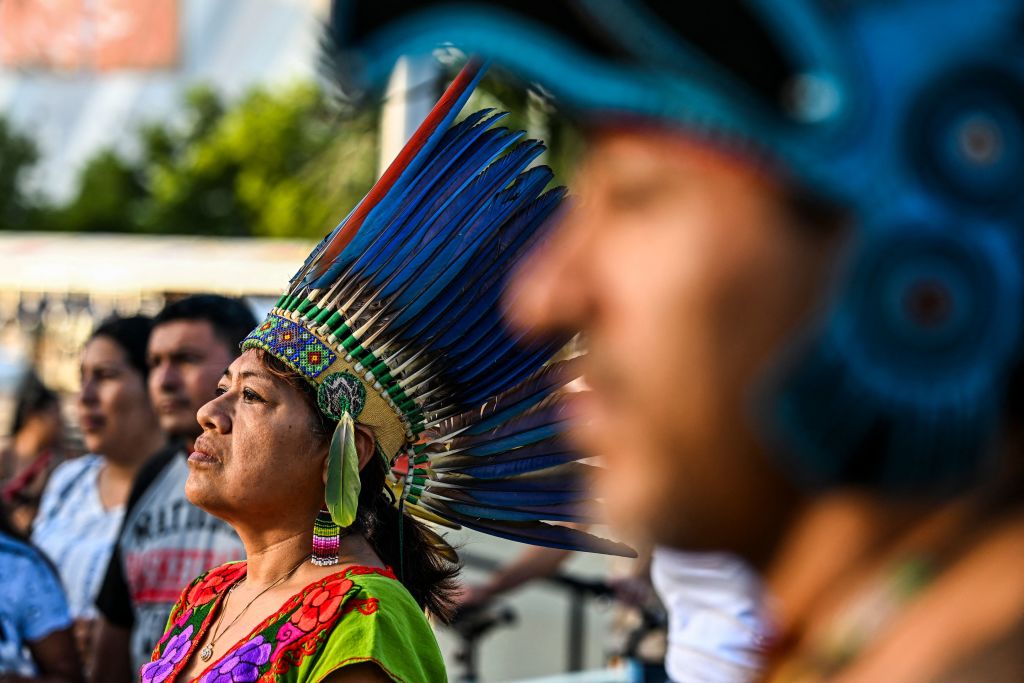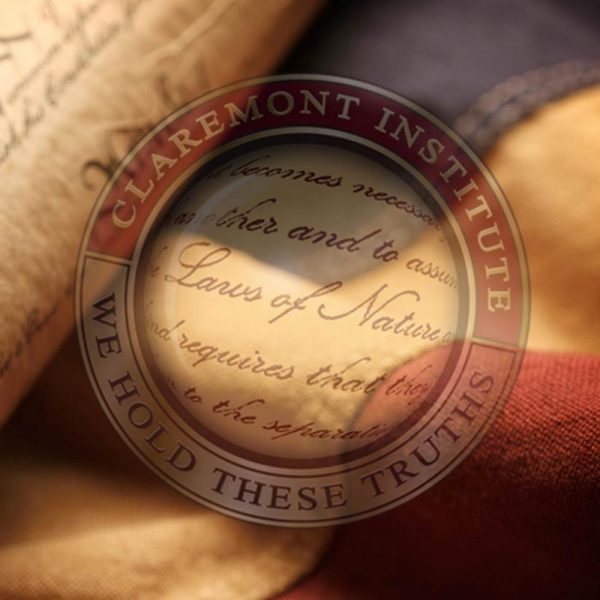Obsessive bodybuilding is a funhouse mirror image of obese trans Gatorade yoginis.
The Bitterroot of Indigenous Knowledge

When “following the science” becomes pure quackery dressed up in cutting-edge native garb.
A common claim of advocates of “indigenous knowledge” is that it provides a useful complement, or even a preferable alternative, to “Western science.” Unlike the limited methods of Western science, we are told, indigenous knowledge is an invitation-only potlach of multiple “ways of knowing.” Failing to heed the nostrums of these ancient native secrets supposedly risks social collapse and planetary disaster.
The Biden Administration now requires all agencies to consider indigenous knowledge in their work and has created 200 “co-stewardship agreements” with Indian tribes to manage federal lands using indigenous knowledge. It has also shoveled an astounding $830 million into indigenous knowledge grants—enough money to put many indigenous scholars onto permanent welfare. “It is essential that we do everything we can to ensure that Indigenous Knowledge helps guide our ongoing work as stewards of public lands and waters,” gushed Interior Secretary Deb Haaland in 2023.
A March statement by Advisory Council on Historic Preservation Chair Sara Bronin said indigenous knowledge was “a valid and self-supporting source of information” but also that it “should be protected from inappropriate disclosure,” because it is “sensitive in nature.” In other words, your federal government is now officially committed to the veracity of hieratic native mythologies.
The indigenous knowledge movement is used by Native American groups to advance their interests, including the transfer of land, the repatriation of archaeological and anthropological objects, the blocking of oil and gas leases, the protection of alleged sacred stone landscapes (usually on valuable land), and making claims against former Indian residential schools.
It is also a farce. It has been blamed for the mismanagement that led to the 2023 Maui wildfire and for smuggling religious claims into federal rule-making.
Ask someone to explain precisely what indigenous knowledge is and you will be swarmed by a word salad of European romanticism about community relationships and ancient expertise. As a Canadian journalist noted: “Usually, Indigenous science advocates give the awfully convenient answer that their craft simply does not conflict with formal science, and then run out the clock before any meaningful follow-ups can be asked.”
At least in the United States (unlike in Canada, New Zealand, and Australia) we can still criticize such indigenous ideas without risk of professional or criminal sanction. So let me offer a small example that tells a bigger story.
In an essay on March 23 in Canada’s newspaper of record, The Globe & Mail, the University of British Columbia forestry professor Jennifer Grenz claimed that white settlers in Montana’s Bitterroot Valley failed to heed Indian warnings about a mysterious disease on the west bank of the river when they began arriving in the 1870s. The result was widespread infection with what came to be known as Rocky Mountain spotted fever. “This story spoke to me because it seems little has changed over the past 125 years to have our knowledges disregarded with serious consequences,” wrote Grenz, who claims native ancestry.
Grenz originally used the story of wise Indians being ignored by racist, land-grabbing whites in her Ph.D. dissertation of 2020. She repeats it in her new book Medicine Wheel for the Planet, inexplicably backdating the original warning to the 1840s. Her source there was a post earlier that year on Twitter/X by a group of amateur entomologists in the United States who claimed that “White settlers in the Bitterroot valley of Montana ignored indigenous warnings about vengeful spirits on the valley’s West side.” Grenz replied to the original post: “Yet another example of settlers’ disregard for our knowledges and of scientists describing our knowledges in a mystical way that allows them to then take credit for another ‘discovery.’”
Grenz also recounted being angered after reading a 1902 federal report on the disease that used “Western” methods to allay widespread fears that it was communicable: “I felt disappointed that over one hundred years later, I could so strongly connect with the disconnect between Indigenous knowledge and Western science,” she wrote in the dissertation. The search for the scientific causes of the fever by the whites, she wrote, showed “the attempted erasure of our communities.”
When white settlers began to arrive in the Bitterroot Valley, they were indeed told by some local Indians not to settle on the western side of the river, according to a 1911 joint report by the U.S. Department of Agriculture and Montana Agricultural College. They were “warned by the Indians of the danger of contracting a very serious disease if they visited certain localities,” the scientists noted. “From what has been learned in recent years it is evident that these dangerous localities are the very ones in which spotted fever is now most prevalent.”
What this shows is that some local Indians may have had observational knowledge from long residence in the Bitterroot Valley that allowed them to make correct inferences about the presence of a disease. The newcomers, by definition, lacked such observational knowledge at first. How many failed to heed the warnings we do not know, nor whether they constituted a majority or a minority of settlers. By the 1880s and 1890s, however, all settlers recognized that some nasty disease was easily contracted on the western side of the river, leaving 80 percent to 90 percent of the stricken dead.
There is nothing “indigenous” about having observational data: indeed, it is at the heart of Western science. Nor does a failure to believe someone else’s unproven claims constitute genocide. Skepticism about knowledge claims is another precious Western tradition. Indeed, many Indians also rejected those claims. A 1915 report cited an Episcopalian missionary who said that the Arapahoe Indians did not accept the idea that a disease existed on the western side of the river.
I won’t bore you with the long list of white men who did the arduous work of science to discover that a tick causes Rocky Mountain spotted fever and developed solutions, including a vaccine by 1927. Their work is an epic achievement of “Western science.” Suffice it to say that the Indians, as well as the settlers, were grateful for the work. One head of the Montana State Board of Health who played a key role in the efforts, William Cogswell, was inducted into a Blackfoot tribe and named Little Bull.
Most scientists I know roll their eyes when asked about “indigenous knowledge.” They say nothing because it is dangerous to speak out. One scholar who braved the torrents, Timothy Ives, published a book-length critique of “Indian stone landscapes” activism in New England under the title Stones of Contention in 2021. Facing hostility, he has since departed his position as principal archaeologist of the Rhode Island Preservation and Heritage Commission and works in the private sector. You have been warned.
But Ives and other critics are right. The fact is that “indigenous knowledge” is a political label used by activists to promote various forms of Marxism, feminism, post-colonialism, and post-positivism by dressing them up in cutting-edge native garb. These activist scholars are explicit about the direct connection from the Marxist theories of the past to today’s “indigenous knowledge” claims. But nonsense is nonsense, even when it is offered as a peace pipe, or wielded like a tomahawk.
As with Indian stone landscape myths, Indian ecological stewardship myths are on a roll. Grenz heads a Canadian government-funded “indigenous ecology lab” at the University of British Columbia, part of the North American academic establishment’s post-2020 moral panic about “indigeneity.” It seeks to muscle in on environmental protection in the province, which local tribes have recently demanded to co-govern with the elected government (as was recently attempted in Australia). The gravy train for indigenous environmental management companies, such as one owned by Grenz, will be lucrative indeed.
In the U.S., the National Science Foundation has handed over $30 million to a new Center for Braiding Indigenous Knowledges and Science housed at the University of Massachusetts with promises of another $30 million to come. It is headed by Sonya Atalay, a radical anthropologist who claims native ancestry. She uses drum-ins and other forms of protest to muster political pressure for the application of the “indigenous knowledge” that seems to come to her after many hours of divination in the longhouse.
Without anyone seeming to notice, then, governments in the United States, Canada, and other Anglo settlement countries have become institutionally committed to medieval quackery, notably on the watch of left-wing governments that claim to be “following the science.”
The big bull of indigenous knowledge has turned into the very sort of mysticism that its advocates claim to oppose. Like most aspects of native identity, it has grown up on a rich manure pile of European romanticism and Marxist oppression narratives. It has become an evil spirit, and we desperately need a vaccine against it.
The American Mind presents a range of perspectives. Views are writers’ own and do not necessarily represent those of The Claremont Institute.
The American Mind is a publication of the Claremont Institute, a non-profit 501(c)(3) organization, dedicated to restoring the principles of the American Founding to their rightful, preeminent authority in our national life. Interested in supporting our work? Gifts to the Claremont Institute are tax-deductible.
The host of the Rubin Report talks about leaving the Left and forging his own path.
A Statement from the Claremont Institute
The dark history of the radical Left's enforcement arm.
Our ruling classes hold as much contempt for reality as they do for us.
How the left usurped our language—and the Right let it happen.






